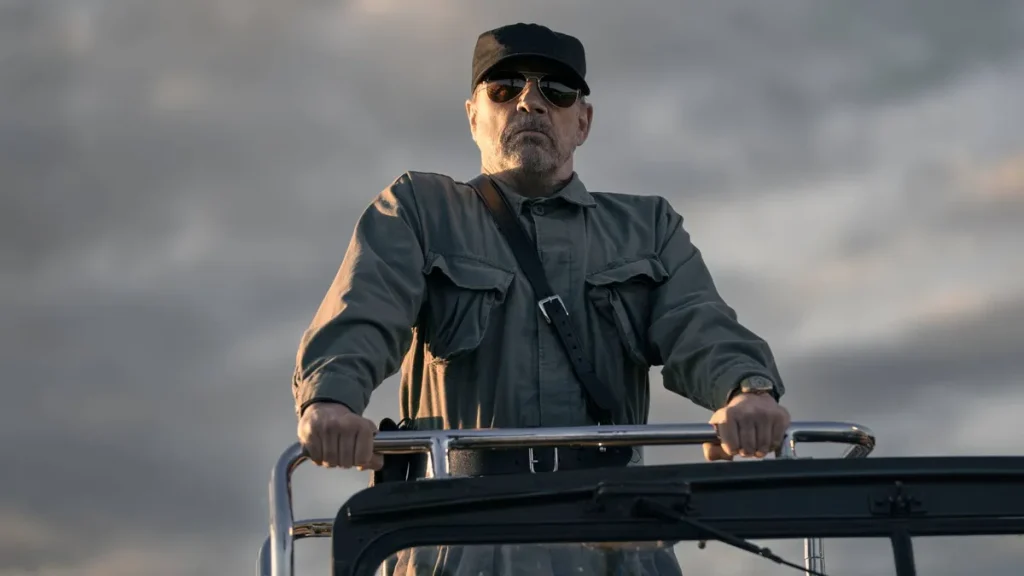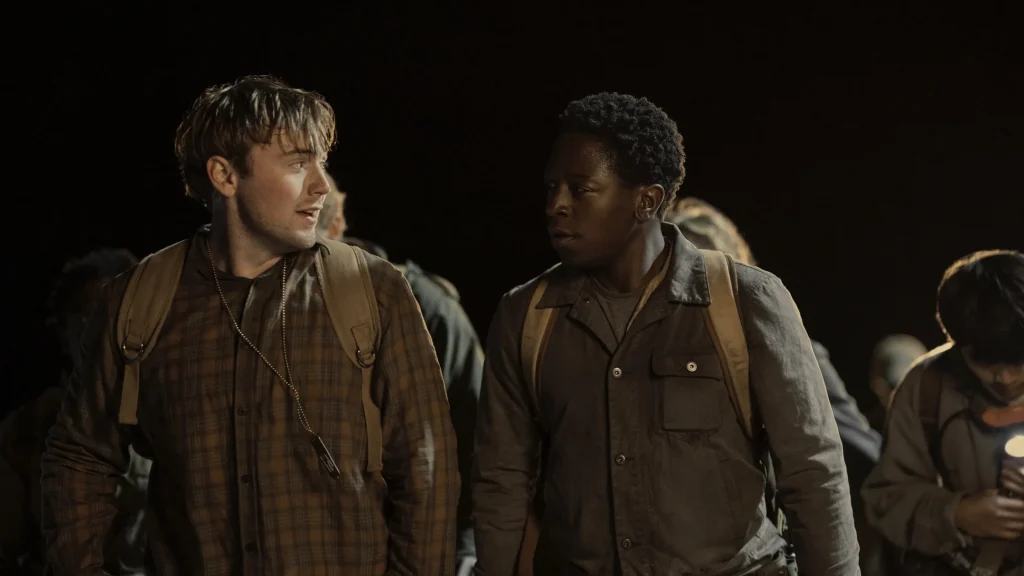
Fifty teenage boys step onto an endless road, each representing a different U.S. state, governed by one brutal rule: keep walking, or you’re out permanently. The event, celebrated and televised as national entertainment, blurs the line between patriotism and cruelty. There are no breaks, no rest, and no real prize except survival. As miles turn into days and fatigue strips away whatever innocence they had left, the walk becomes something far more disturbing than a competition. Friendships form out of desperation, rivalries are born from fear, and every mile marker becomes its own quiet countdown. With each sunrise, the boys are forced to confront their memories, their limits, and their reasons for taking that first step in the first place. It’s a journey designed to break bodies, expose souls, and leave only one standing and that simple, chilling idea is more than enough to pull you in.
As a Stephen King fan who knows how often his adaptations fall apart, this film genuinely surprised me. Very few King stories make it to screen with their spirit intact. Doctor Sleep came close, The Shining is a cinematic classic but barely resembles the novel, and most of the rest fall into the “what could have been” category. The Long Walk, however, stands out as one of the most faithful page-to-screen translations in King’s cinematic history. It understands the tone. It respects the psychology. It captures the uncomfortable quietness of King’s story the dread, the waiting, the internal breaking. And because of that, it feels honest to its source in a way fans will appreciate. Director Francis Lawrence approaches the film with a grounded, human vision, focusing on psychological tension and moral decay. It’s one of his most controlled and disciplined films, proving that he understands the power of restraint when adapting King’s world.
The performances ignite the film from the beginning. Cooper Hoffman delivers a heartfelt and layered Ray Garraty driven, confused, and human in all the right and wrong ways. David Jonsson, continuing his rise after Alien: Romulus, gives McVries charisma and emotional weight, grounding the film’s most impactful interactions. The casting overall is spot-on; each boy looks and feels distinct, with personality and wardrobe choices that fit their roles and help the audience quickly understand who they are. You can also see how much effort went into casting these roles weren’t chosen for star power, but for fit, presence, and personality, which is why the ensemble feels so authentic and memorable. These details matter in a story with 50 walkers, and the film makes sure you don’t lose track of them as just faces in a crowd.

Mark Hamill as The Major is cold, composed, and symbolic a performance that absolutely works for the character. But while many have praised this as one of Hamill’s strongest roles outside Star Wars, I can’t fully echo that sentiment for one simple reason: The Major is underused. Hamill nails the presence, but he’s given too little screen time to leave the deep mark he’s fully capable of. The character is meant to be emotionless, yes, but more encounters or moments with him could have elevated the tension even further, but that also creates a challenge to shine in a role with not a lot of screen time, and Hamill nailed it, it takes a lot to leave a mark in that window.
Visually, the film makes bold and effective choices. The aspect ratio establishes the mood immediately, while the cinematography shifts between long, wide shots and tighter frames that prevent the repetitiveness of the setting from ever becoming dull. You feel the monotony of the walk that’s the point but the pacing of the shots, the camera distance, and the visual rhythm keep the experience engaging. It’s a delicate tightrope, and the film walks it confidently.
Where the film stumbles is in emotional depth that it almost achieves. Garraty’s flashback with his father is too quick to land, and the fast bond between Garraty and Pete lacks the buildup needed to make it fully convincing. In extreme conditions, humans cling to companionship, yes but a little more development would have made those emotional beats hit harder. Most of the film’s heart ends up resting on Garraty and McVries, with Sebastian, Art, and Olson contributing but never reaching the same impact.
Rather than unfolding in a traditional cinematic three-act structure, The Long Walk is told in miles and days chapter by chapter, sunrise by sunrise, like a psychological countdown. The escalation doesn’t come from plot twists, but from exhaustion, paranoia, and the slow stripping of the human spirit. The final stretch of the journey is where the film becomes its most emotional and gripping, landing on a tone that lingers after the credits. The story progresses with a steady emotional climb the boys break not through sudden twists, but through quiet moments, small losses, and psychological cracks that widen mile after mile. Each chapter brings a subtle shift in tone, dynamic, or morale, pulling the audience deeper into the exhaustion and hopelessness. It’s a slow escalation, but an effective one that pays off by the final stretch.

And while some will compare it to The Hunger Games or the “battle royale” genre, that comparison misses the point. This isn’t rebellion or spectacle-driven action. It’s internal. It’s about endurance, identity, trauma, and the cost of survival under the eye of a society entertained by suffering. That’s a different message entirely — and one the film delivers well.
In the end, The Long Walk is a strong, absorbing, and admirably faithful adaptation. Not a masterpiece, not without flaws, but absolutely worth experiencing. It’s a journey film — one you feel, one you walk through, one that makes you think about the world we live in and how relevant this disturbing idea still is.
Its a gripping and faithful King adaptation that walks far, hits hard, and stays in your head — even if it leaves a few emotional miles unexplored.
Rating (7/10) ★ ★ ★ ★ ★ ★ ★ ☆ ☆ ☆
